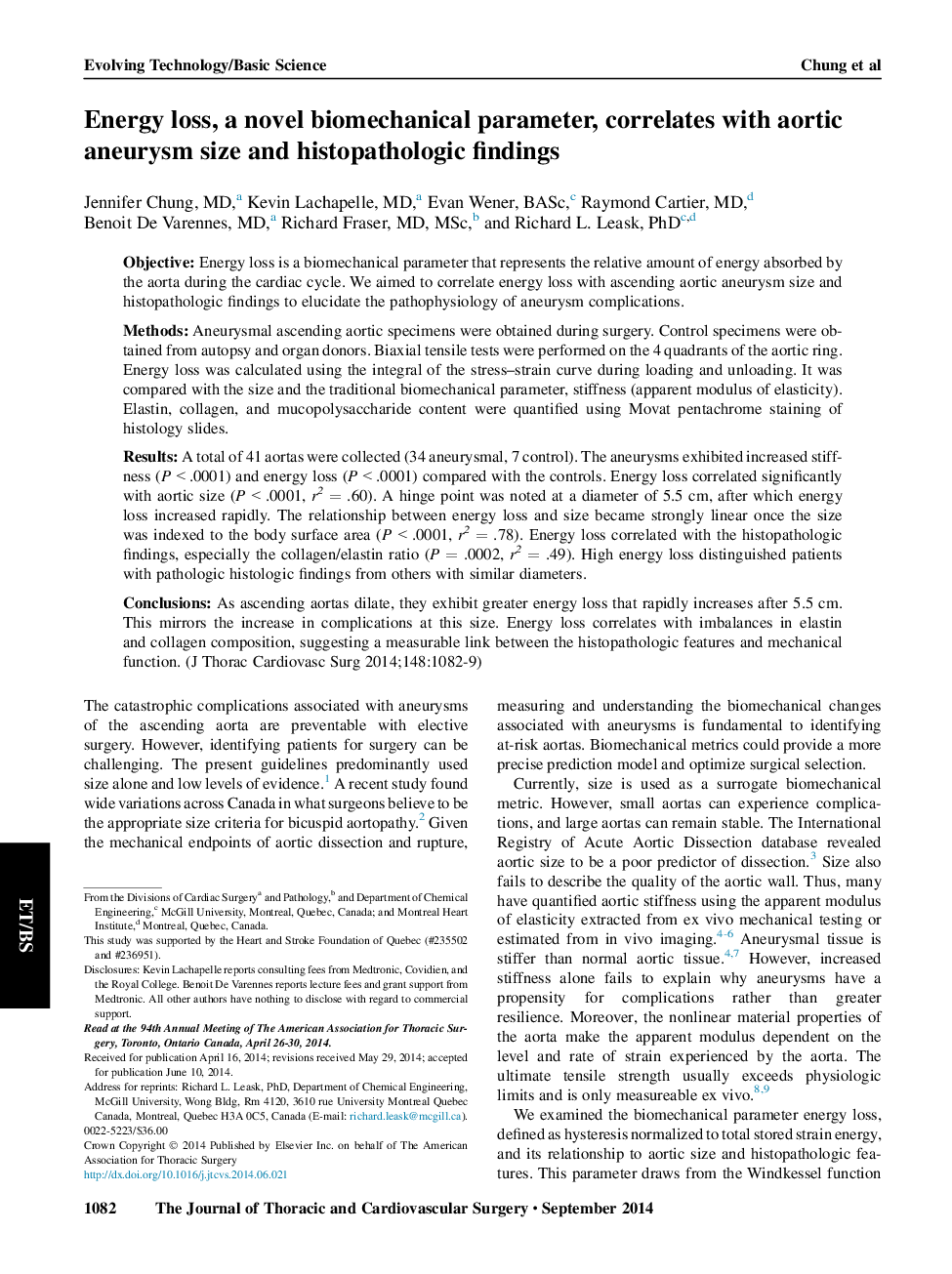| Article ID | Journal | Published Year | Pages | File Type |
|---|---|---|---|---|
| 5989373 | The Journal of Thoracic and Cardiovascular Surgery | 2014 | 8 Pages |
ObjectiveEnergy loss is a biomechanical parameter that represents the relative amount of energy absorbed by the aorta during the cardiac cycle. We aimed to correlate energy loss with ascending aortic aneurysm size and histopathologic findings to elucidate the pathophysiology of aneurysm complications.MethodsAneurysmal ascending aortic specimens were obtained during surgery. Control specimens were obtained from autopsy and organ donors. Biaxial tensile tests were performed on the 4 quadrants of the aortic ring. Energy loss was calculated using the integral of the stress-strain curve during loading and unloading. It was compared with the size and the traditional biomechanical parameter, stiffness (apparent modulus of elasticity). Elastin, collagen, and mucopolysaccharide content were quantified using Movat pentachrome staining of histology slides.ResultsA total of 41 aortas were collected (34 aneurysmal, 7 control). The aneurysms exhibited increased stiffness (P < .0001) and energy loss (P < .0001) compared with the controls. Energy loss correlated significantly with aortic size (P < .0001, r2 = .60). A hinge point was noted at a diameter of 5.5 cm, after which energy loss increased rapidly. The relationship between energy loss and size became strongly linear once the size was indexed to the body surface area (P < .0001, r2 = .78). Energy loss correlated with the histopathologic findings, especially the collagen/elastin ratio (P = .0002, r2 = .49). High energy loss distinguished patients with pathologic histologic findings from others with similar diameters.ConclusionsAs ascending aortas dilate, they exhibit greater energy loss that rapidly increases after 5.5 cm. This mirrors the increase in complications at this size. Energy loss correlates with imbalances in elastin and collagen composition, suggesting a measurable link between the histopathologic features and mechanical function.
